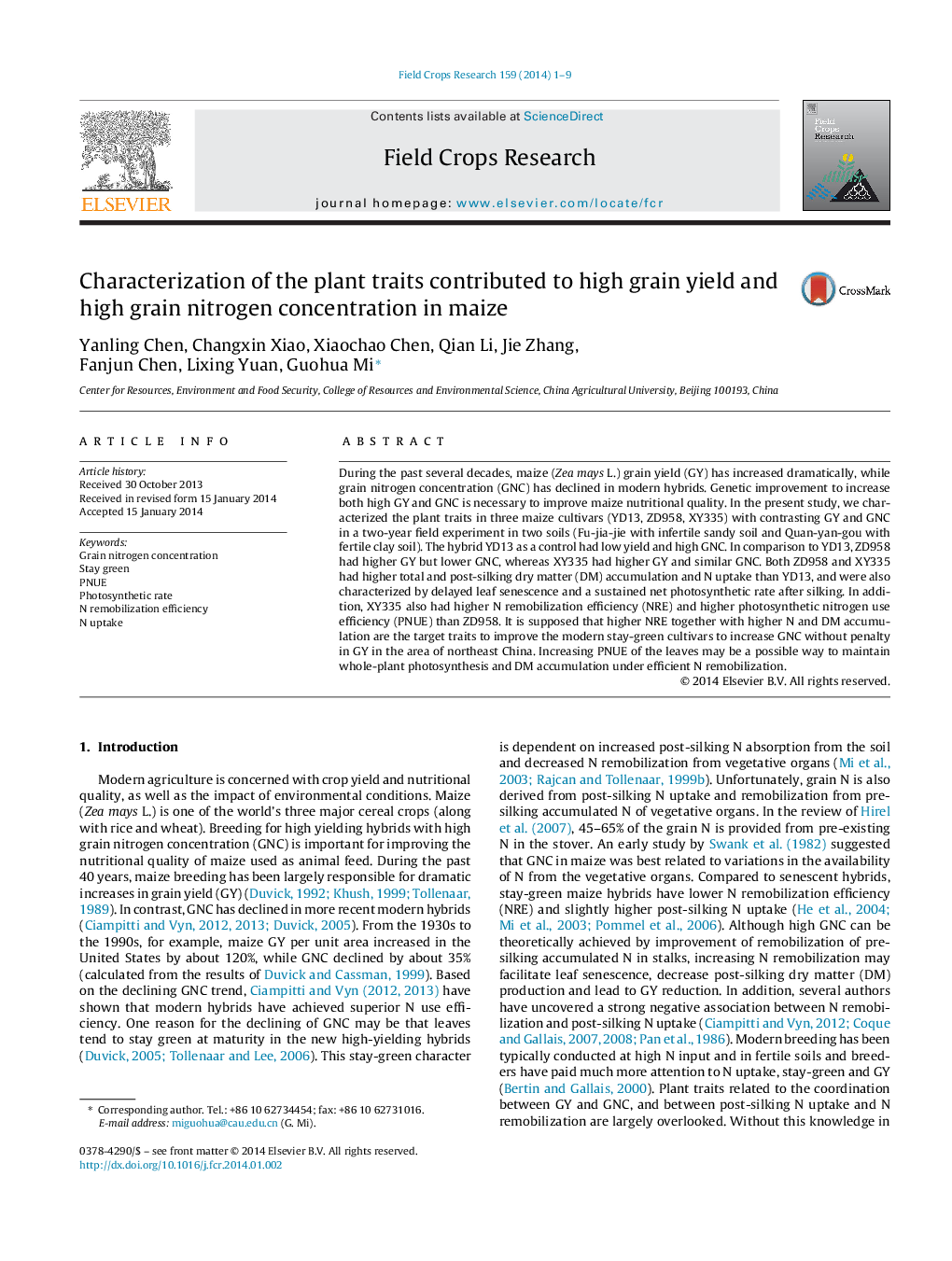| Article ID | Journal | Published Year | Pages | File Type |
|---|---|---|---|---|
| 4510123 | Field Crops Research | 2014 | 9 Pages |
•Increasing GNC without GY penalty is a goal in modern maize breeding.•Selection of genotypes with high N and DM accumulation and high NRE is required.•Higher leaf PNUE is a possible way to maintain whole-plant photosynthesis under high NRE.
During the past several decades, maize (Zea mays L.) grain yield (GY) has increased dramatically, while grain nitrogen concentration (GNC) has declined in modern hybrids. Genetic improvement to increase both high GY and GNC is necessary to improve maize nutritional quality. In the present study, we characterized the plant traits in three maize cultivars (YD13, ZD958, XY335) with contrasting GY and GNC in a two-year field experiment in two soils (Fu-jia-jie with infertile sandy soil and Quan-yan-gou with fertile clay soil). The hybrid YD13 as a control had low yield and high GNC. In comparison to YD13, ZD958 had higher GY but lower GNC, whereas XY335 had higher GY and similar GNC. Both ZD958 and XY335 had higher total and post-silking dry matter (DM) accumulation and N uptake than YD13, and were also characterized by delayed leaf senescence and a sustained net photosynthetic rate after silking. In addition, XY335 also had higher N remobilization efficiency (NRE) and higher photosynthetic nitrogen use efficiency (PNUE) than ZD958. It is supposed that higher NRE together with higher N and DM accumulation are the target traits to improve the modern stay-green cultivars to increase GNC without penalty in GY in the area of northeast China. Increasing PNUE of the leaves may be a possible way to maintain whole-plant photosynthesis and DM accumulation under efficient N remobilization.
